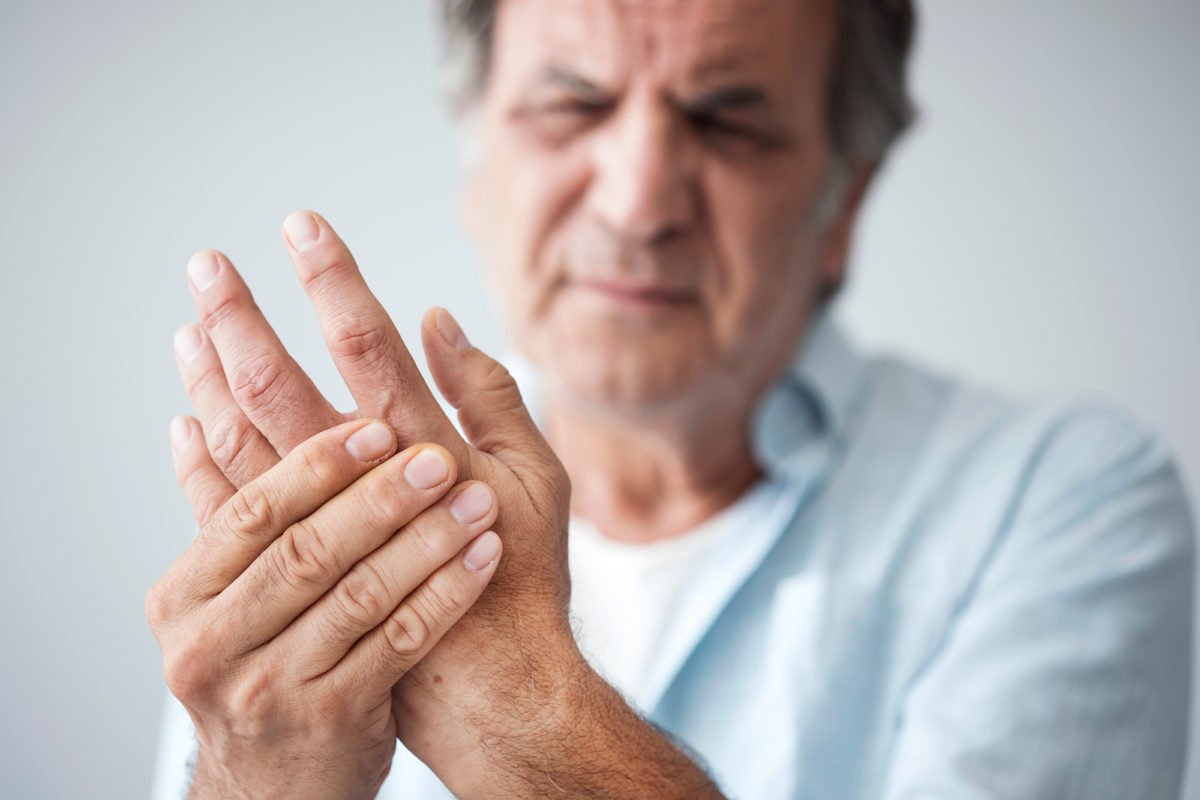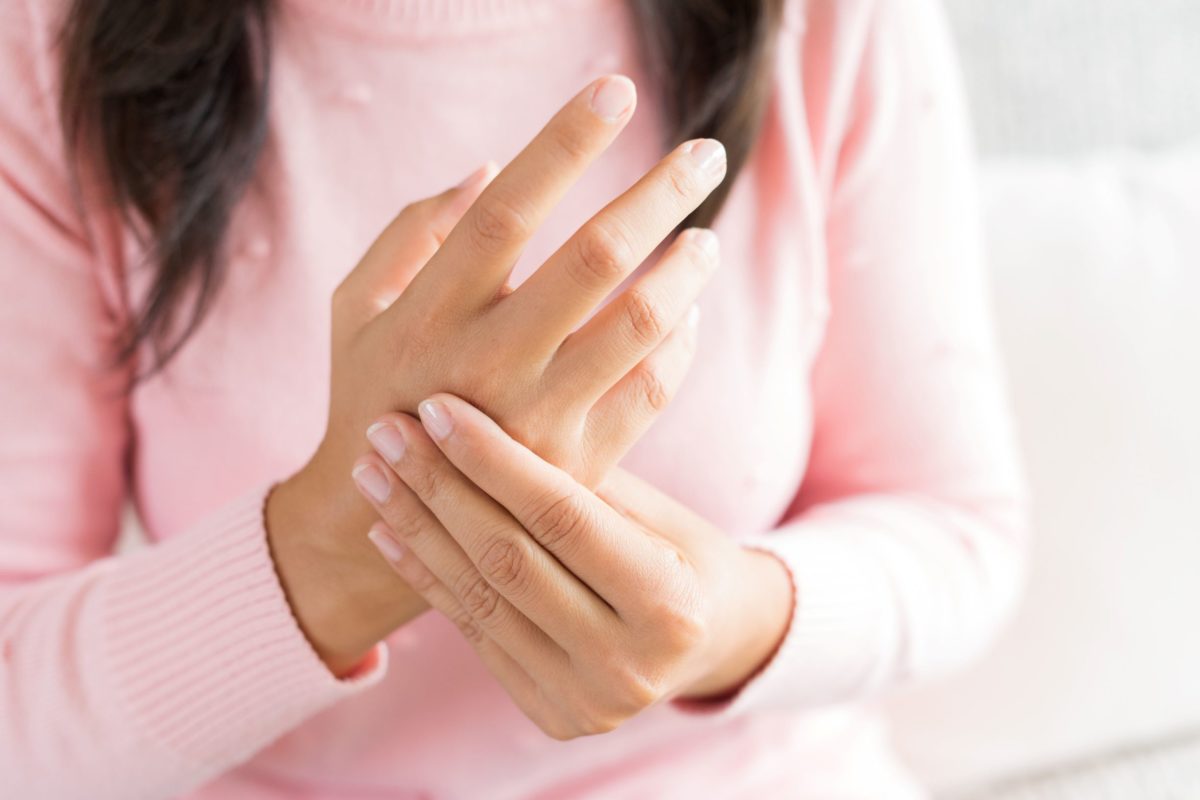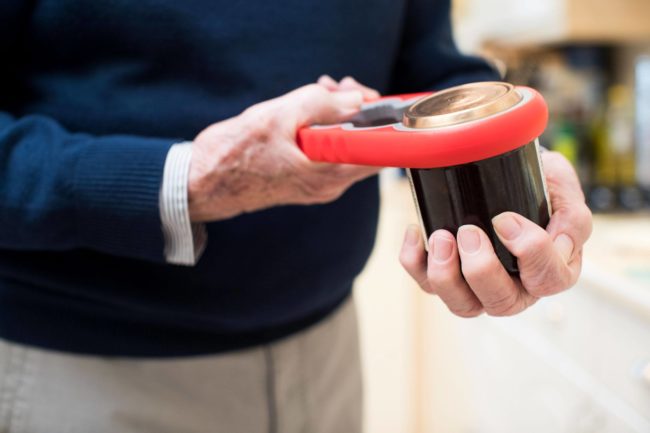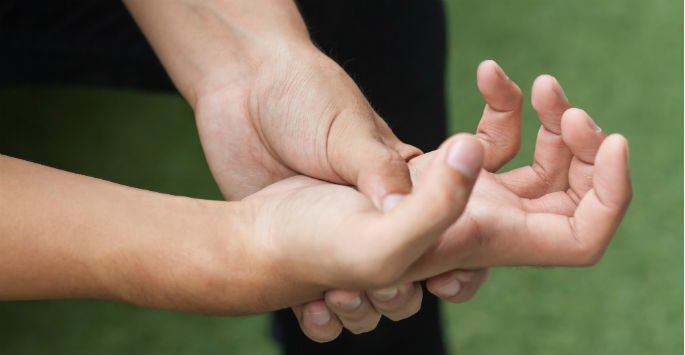Stiff hands can hit you all of a sudden. One minute you’re going about your day and the next, you’re wiggling your wrists in hopes of bringing life back into your fingers.
Certain serious medical conditions can definitely bring this on, but in other cases, your hands may feel stiff for no apparent reason.
Well, there most likely is a reason why your hands are stiff, and self-care may be your first line of treatment and prevention.
5 Common Causes of Stiff Hands
Stiffness in your fingers, thumb, and palm occur when there is a problem in a joint, including the ligaments and muscles.
One of the greatest culprits is arthritis, which isn’t a condition as much of a description of more than 100 types of ailments. Types of arthritis that may lead to stiff hands include:
- Thumb arthritis, also known as basal joint arthritis
- Osteoarthritis, which affects the smooth cartilage in the joints
- Rheumatoid arthritis, caused by joint inflammation
- Psoriatic arthritis, which occurs when the lining of a joint becomes inflamed
- MCP joint (metacarpophalangeal joint) arthritis, which is essentially arthritis in the knuckles of the fingers
Other medical conditions that can contribute to the sensation include:
- Trigger finger (stenosing tenosynovitis)
- Fractures
- Dislocations
- Sprains
- Tendon and muscle injuries
- Dupuytren’s contracture
- Scleroderma
- Raynaud’s disease
Environmental factors and how you use your hands may lead to stiffness as well, such as gaming for too long or spending too much time outside in freezing temperatures.
Questions and Answers
Whether your hands become stiff temporarily for a few minutes or it’s an ongoing symptom, the reasons why this happens can be mysterious. When you see Dr. Arora, tell him about your symptoms in detail, and he will help identify the source of your problems.
In the meantime, here are some of the common questions we hear about hand and joint stiffness along with the basic answers.
Why do my hands get stiff in the morning?
One of the simplest answers is that you slept on them or leaned on them too much as you were sleeping. Avoid leaning on your wrists or tucking your hands under your head as you sleep. Using a brace at night may help you keep your wrists straight.
Otherwise, a common cause of stiff hands in the morning is worn joints or muscle tightness. This may be an indicator of arthritis, but not necessarily. Over the course of your life, your joints experience a lot of wear-and-tear; specifically, the cartilage in your joints dries out, stiffens, and loses lubrication.
This can lead to weaker muscles and stiff tendons, which may tighten even more as you sleep because you’re not moving. Lack of movement allows fluid to build up, which can stiffen tissues. When we move, bodily fluids move through the body more evenly, which can increase flexibility.
Simple lifestyle changes may help combat stiffness in your hands in the morning, including using proper mattresses and pillows, avoiding cold temperatures, staying hydrated, and maintaining a healthy diet. You also should get regular exercise that is ideal for your body’s needs, so talk with Dr. Arora about stretches and exercises you can do to strengthen the muscles in your hands.
Why are the symptoms bad at night?
Just like our eyes and legs, our hands get a lot of use during the day. For that reason, you may feel more stiffness, pain, or throbbing in your hands in the evenings. Resting your hands will help them recover from the everyday grind. That’s the simple answer.
Otherwise, if your hands get stiff while you sleep, it could be a sign of a more serious condition, so talk with Dr. Arora about your symptoms.
Why does cold weather make my fingers stiff?
Momentarily, that’s actually a good sign; it means your body is working as it should. Our fingers and toes are designed to protect the rest of our bodies. In the cold, our blood vessels constrict to keep the core of our bodies and our vital organs warm. That may leave our fingers and toes colder and stiffer.
If you keep that up too long, though, you may experience frostbite in your extremities, which can be very dangerous. Help your body stay warm in the cold by wearing gloves, thick socks, and boots, as well as hats that can cover your ears. If they become wet, change into dry clothing as soon as possible. If you are outside shoveling or playing in the snow, go indoors every 15 minutes or so to warm up.
How do you treat stiff hands?
Treatment for stiff hands will depend on its causes, but some home remedies may help.
- Ask our hand therapist, Lodia, about hand exercises that can help you stimulate your blood flow in the morning or relieve overuse symptoms in the evening.
- Over-the-counter anti-inflammatory medications may help relieve swelling that is causing stiffness in your hands. Talk with Dr. Arora to determine if this will help you. He may have specific medications that would be preferable in your case.
- You can use a brace while you sleep, while participating in hobbies, or at work if your job requires intense use of your hands.
- Gently stretch your hand muscles to loosen them. Ask Dr. Arora or Lodia about how to loosen up your hand muscles safely.
- Take a lukewarm shower or bath to relieve stiff joints. Avoid water that is too hot, as this can dry your skin, which could make your hands feel tighter.
- Use a warm compress or heating pad for only several minutes to relieve stiffness. Be sure to wrap the heating device in a towel before placing it on your skin to avoid burns or swelling.
Diagnosis and Treatment
The first step is to determine why you are experiencing stiff hands. Once the cause is identified, we can advise you on the best course of action, whether it’s simple self-care, hand therapy, medication, or the use of support devices. Surgery may be required in some more serious cases when other remedies do not help.
If your stiff hands are regularly causing you discomfort or you are concerned that this may be due to a serious medical condition, call us to schedule an appointment with Dr. Arora. We will help you identify the cause of your hand symptoms and devise a treatment plan that works for you.



















